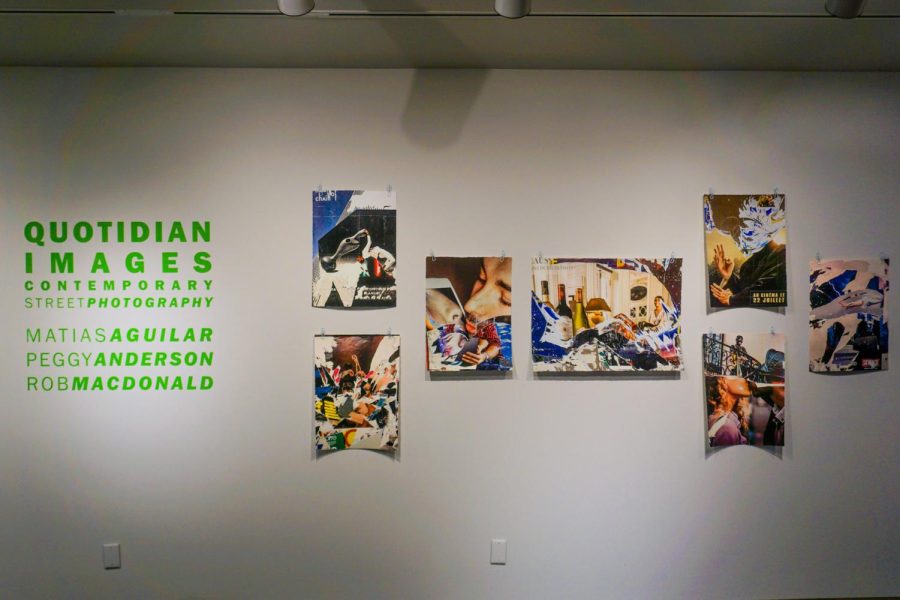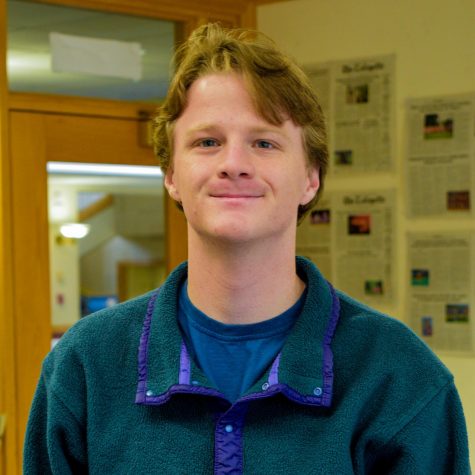What does street photography look like in the post-pandemic world? Now on view at the Williams Center, an exhibit entitled “Quotidian Images: Contemporary Street Photography” answers that question.
The work of three photographers makes up the exhibit: New York and Sweden-based Peggy Anderson, England-based Rob Macdonald and Brooklyn-based Matias Aguilar. The exhibit is comprised of several dozen photos that speak to an era of international lockdowns and social distancing.
“It was interesting how people were thinking about street photography, not because it’s full of people, but because [the streets were] so empty of people,” Rico Reyes, the college’s director of galleries and curator of collections, said.
Although some of the photos were taken up to 15 years ago, many are more recent, and all are invested in asking the viewer to ask questions about sociality.
“How can we expand the conversation about pictures in the public sphere?” Reyes said. “How do we document social interactions when … we are locked out at such a distance? How do we talk about diasporas in America?”
Aguilar’s contributions are the ones most firmly rooted in the street photography tradition.
“He actually goes to the place and photographs the people, the street itself, and [is] really talking about place,” Reyes said.
The photos, from a series entitled “Little Manila, Woodside, Queens,” are all sourced from the titular neighborhood, which is an area that has been historically overlooked, according to Aguilar.
“Us Filipinos or Filipino Americans or everyone who ends up here who is remotely Filipino, we’d love to tell our own stories,” Aguilar said. “We just don’t get the chance.”
Ranging from portraitures to images of fruit stands, Aguilar’s work talks about the people and history of the neighborhood, how the neighborhood has changed and the Filipino diaspora.
Macdonald’s images, on the other hand, are “completely opposite” of Aguilar’s, according to Reyes. “He doesn’t want to show you place. He doesn’t want to show you time. He doesn’t want to show you … things that are key markers of what street photography is,” Reyes said.
Macdonald’s pieces focus on roaming the streets and looking for colors and shapes in hidden areas of cities.
“I think there is kind of compositional beauty everywhere,” Macdonald said. “I’m more interested in shapes and color and pattern within the city… [The photos are] not abstract, but they’re moving towards abstract,” Macdonald said.
Anderson’s contributions to the exhibit combine MacDonald’s abstractions with Aguilar’s focus on place, according to Reyes. All of Anderson’s photos are posters in the Paris Metro that she took across seven years.
“There’s something about the posters … When you start to take the same trains and go to the same metro stops, you notice these posters,” Anderson said. “After a while, they change, and they’re starting to be torn. And so it definitely was something that caught my eye.”
According to Anderson, a lot of her creative process surrounds what to include in the frame and crop from her photos.
“So much of photography is choices,” Anderson said.
The way a photograph is composed and conceived helps with making these choices. Anderson said that her composition helps in getting to know a place and feeling connected to it.
“The more you look for something, the more you see,” Anderson said.
Aguilar, on the other hand, comes up with a story through his work.
“I see myself as an auteur artist [who] sort of comes up with a story: it is personal, it is romantic,” Aguilar said.
The exhibit is open for viewing on Wednesdays to Sundays from 12 p.m. to 5 p.m. in the Williams Center Gallery until March 5.


























































































































